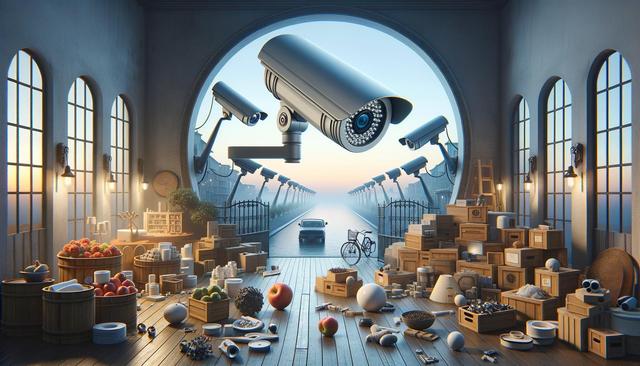Choosing the Right Surveillance Camera
When considering surveillance camera installation, the first step is choosing the appropriate camera type for your specific needs. With various options available, it’s essential to evaluate which features align with your security objectives. Cameras can be classified broadly into wired and wireless categories. Wired cameras provide a consistent power source and reliable connection, while wireless cameras offer ease of installation and flexibility.
Consider factors such as resolution, field of view, night vision capabilities, and weather resistance. For outdoor installations, weatherproof cameras with high resolution and a broad field of view are ideal. Additionally, cameras equipped with infrared or low-light technology ensure clear images even in dim conditions. Selecting the right camera enhances the effectiveness of your surveillance system.
Optimal Placement for Maximum Coverage
Effective surveillance camera installation requires strategic placement to ensure optimal coverage. Identifying the most critical areas for monitoring is vital to enhance security. Ideally, cameras should be installed at entry and exit points, such as doors and windows, to capture anyone entering or leaving the premises.
Another consideration is the camera’s height and angle. Cameras should be installed high enough to avoid tampering but angled correctly to capture clear footage. Overlapping fields of view from multiple cameras can eliminate blind spots and provide comprehensive coverage. This strategic placement helps in deterring potential intruders and monitoring activities effectively.
Power Source and Connectivity
Connecting surveillance cameras to a reliable power source is crucial for consistent operation. Wired cameras typically require connection to a power outlet, while some models might need Ethernet cables for power and data transfer. In contrast, wireless cameras rely on batteries or solar power, offering more flexibility in placement but requiring regular battery checks or solar panel maintenance.
In terms of connectivity, ensure a stable internet connection, especially for cameras that offer remote viewing capabilities. This allows real-time monitoring and alerts through smartphones or computers, providing peace of mind when you are away. A stable connection is essential for efficient surveillance camera installation, ensuring seamless operation and footage accessibility.
Installation Process and Professional Assistance
While some individuals may choose to undertake surveillance camera installation as a DIY project, seeking professional assistance can offer several benefits. Professionals ensure that cameras are installed securely and optimally, maximizing the system’s effectiveness. They also provide expertise in configuring settings and troubleshooting any issues that may arise.
Professional installation might include services like initial consultation, equipment selection, strategic camera placement, and comprehensive testing. Additionally, experts can provide guidance on integrating cameras with existing security systems, ensuring a cohesive and efficient setup. Professional assistance can streamline the installation process and enhance overall system performance.
Maintaining and Upgrading Your System
Regular maintenance is essential to keep your surveillance camera system functioning effectively. Routine checks involve cleaning camera lenses, ensuring all connections are secure, and verifying camera settings. Conducting periodic tests of the system’s functionality can help identify any issues before they become significant problems.
As technology advances, consider upgrading your system to include more advanced features. Modern upgrades might consist of enhanced resolution, improved night vision, and integration with smart home systems. Upgrading ensures your surveillance camera installation remains effective and up-to-date with current security standards.
Conclusion
Surveillance camera installation is a crucial step towards enhancing the security of homes and businesses. By carefully selecting the right camera type, ensuring strategic placement, and maintaining reliable connectivity, you can create a robust surveillance system. Whether opting for professional installation or a DIY approach, prioritizing these elements will provide effective monitoring and peace of mind. Regular maintenance and upgrades will keep your security system at the forefront of technological advancements, ensuring long-term protection and reliability.
